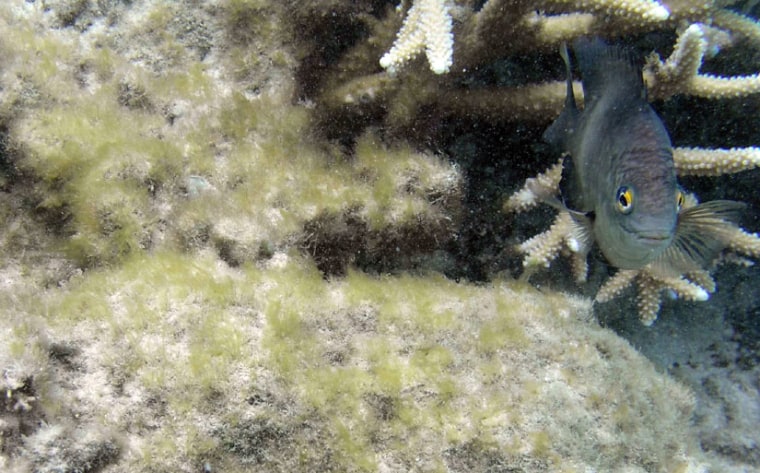The Beatles were not too far off when they sang about an octopus' garden. New research has determined that some fish have gardens, which they rigorously tend to and harvest.
According to a paper accepted for publication in the journal BMC Evolutionary Biology, the damselfish, Stegastes nigricans, maintains algae gardens. The fish and the algae each benefit from the arrangement.
Such beneficial relationships exemplify what scientists call "mutualism." The latest discovery marks a very rare example of this in a marine environment.
Lead author Hiroki Hata told Discovery News that he and his colleagues saw damselfishes defending territories where certain algae grew. Each damselfish would do this by chasing off sea urchins and other fish.
"Additionally, an intensive farmer, Stegastes nigricans does weeding on less digestible algae, and it results in a monoculture of a specific algal species," said Hata, a researcher in the Graduate School of Science and Engineering at Ehime University.
He and colleagues Katsutoshi Watanabe and Makoto Kato watched with amazement as the damselfish picked up this unwanted algae and dumped it outside of their farm-like gardens. The scientists did an experiment to see how the fish-preferred algae would grow without the arduous maintenance. They found that the "weeds" would quickly overcome the other algae.
For the study, the scientists surveyed 320 territories of 18 damselfish species from coral reefs in Egypt, Kenya, Mauritius, the Maldives, Thailand, Borneo, the Okinawa Islands and the Great Barrier Reef. Although the algae garden crop shifted in the West Indian Ocean, "the intensive farming by damselfish was seen throughout this geographic range," said Hata.
He explained that damselfishes can only eat certain types of algae, such as the red Polysiphonia, because damselfishes lack organs and digestive enzymes that would allow them to stomach more fibrous algal species -- the "weeds."
These fish gardeners enjoy their harvests, however, pulling up and ingesting the red algae with such gusto that some marine turf is still attached.
"The (damselfish) stomach is filled with the algae," Hata said, "but we think... animals harbored by the turf are also important food resources."
Like family members competing for garden space, the fishes compete for land that's suitable for their algae plots. Some damselfishes grow a mixture of algae crops. "Others maintain small monocultures with higher yield per unit area," added Hata.
The damselfish/algae relationship, "cultivation mutualism," is not usually seen in marine habitats.
Gavin Maneveldt and Derek Keats, botanists at the University of the Western Cape, previously determined that a certain species of limpet, Patella cochlear, gardens algae along the South and southern West coasts of South Africa.
In this case, the fish's grazing functions as a lawnmower would keep the growth of a certain kind of fleshy algae under control. Limpets, however, don't have as close of an evolved relationship with their algae, since damselfish do more crop maintenance.
As such, damselfishes are the true "green thumbs" of the sea.
